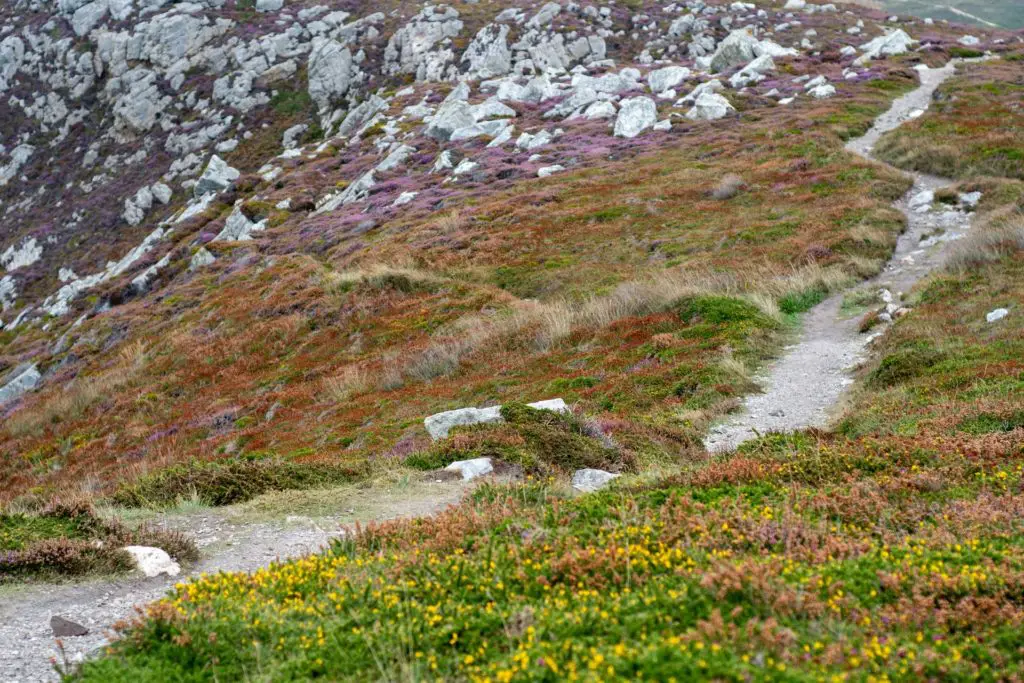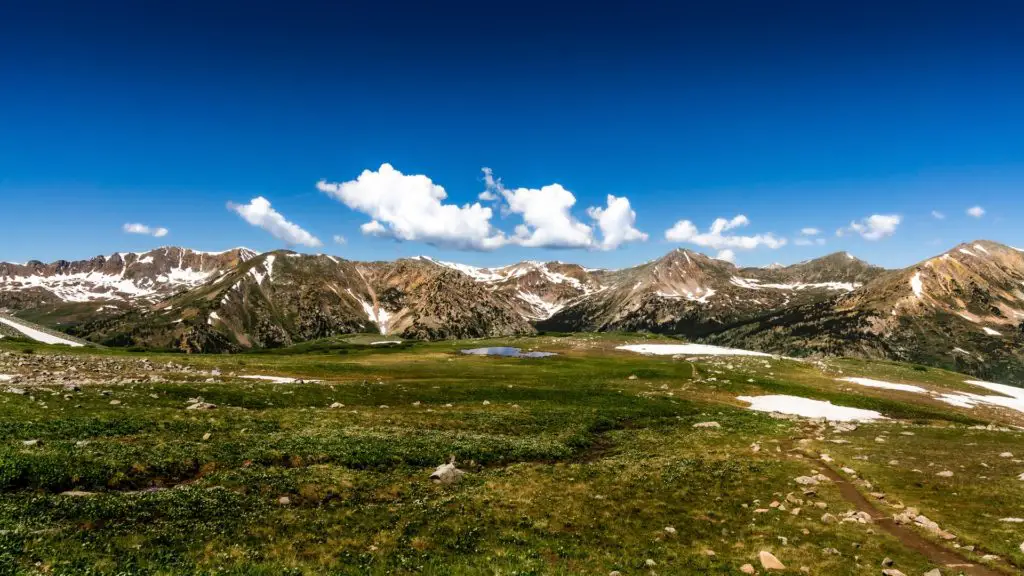The plants living in the tundra are hardy plants. That evolved to survive in the coldest biome in the world. the word tundra derived from a Finnish word which means treeless land.
There are no trees in the tundra. But there are still plants out there. There around 17000 plant species living in the tundra.
Plants like little shrubs, different types of mosses, lichens, sedges, and about four hundred flowering plants that vary in colors.
There are three tundras in the world, the arctic tundra, Antarctic, and Alpine tundra. Those three tundras share almost the same climate, tough conditions, and the same plants.
Most common plants in the tundra
while there are more than 17000 plant species living in the tundra. The flowing is the list of its most common plants.
Mosses
There are many types of mosses in the tundra. They live in the tundra’s surface soil, rocks, and stones.
Since mosses do not have roots and stems. They absorb their nutrients and moisture directly through their leaves.
In tundra you will find the landscape full of bogs and wetlands. This happens because the tundra rainfalls can not drain through the tundra’s lower soil layer.
That layer is permanently frozen (permafrost). and also the evaporation level is very low in the tundra biome. because of the cool weather even in the summertime.
Those natural conditions made tundra boggy and wet in the summer season. The high moisture and wet are what every moss asks for.
Mosses in tundra flourish in summer. And they store the exessive moisture and nutrients in their leaves to use it in the winter season.
They go dormant in winter to survive the severe drought in the tundra. mosses play an important role in the tundra ecosystem.
Since mosses grow as mats in the ground. They insulate the permafrost from heat and help in keeping it frozen all year round. mosses living there have a wide range of colors.

Bladderworts
bladderwort is a kind of plant that consumes insects and little animals as nutrients. bladderworts trap flies and other insects that are nearby.
This weird tundra plant loves bogs, wetlands, and very moist landscapes. Even they grow in water. it can be submerged in water or floating.
And this exactly what tundra offers in the summer ( boggy landscapes). bladderwort plays an important role in the tundra ecosystem. because it is the food source for waterfowl and fish. They also shelter some of this same species.
Lichens
If you viewed the tundra from helicopter or drone during the summer. You will see the tundra landscape looks like a colorful painting.
This painting formed out of different kinds of lichens. lichens that have different and vibrant colors.
Lichens like mosses, need bogs and a high level of moisture to grow. They grow and flourish in the growing season (summer) in the tundra biome. While they go dormant during the winter to survive the high level of drought.
Those colorful plants grow slowly. But they can live up to 5000 years if no one disturbed them.
lichens are very sensitive to air pollution. Scientists use them as bioindicators of the quality of the air.
Sedges
Sedges are grass-like plants. The ones that grow in the tundra are small when compared to sedges in other world’s landscapes. This because the tundra soil is poor and has little nutrients.
The other reason is that the growing season in the tundra is very short, only 50 to 60 days. But sedges did great in adapting to tundras harsh conditions.
Sedges love wetlands and moisture. Which is something abundantly available in the tundra during the summer season.
In winter tundra sedges go dormant and its color goes from green to red. The shallow root system of sedges allows it to grow only in the active tundras soil ( The soil that thaws in summer).
Bearberry
Bearberry plants are plentiful in the tundra. Because it grows near the ground, the tundra winds cant harm it. the plant has such a name because bears love to eat berry fruits.
a lot of animals besides bears eat its berry. while birds love to eat its leaves. bearberry evolved to grow in places that have poor and low nutrients soil.
Therefore the plant is able to grow in the tundra soil. also, bearberry has silky and fine hair in its leaves and stems. the hair helps it to stay warm during the severe cold period in the tundra.
besides that, it also has leathering leaves that sustain and keep water and moisture from evaporation during the summer.
This special feature helps bearberry to retain moisture and survive the drought season.
Labrador tea
In tundra, labrador tea grows as ground cover or carpet. Native tundra people use labrador leaves to make a tea full of vitamin C.
Arctic willow
Also called rock willow. it is a shrub that can reach 15 to 20cm in height. which makes it a suitable plant to live in the windy tundra. the leaves of this plant are oval-shaped.
The leaves are dark green at the bottom. While a lighter green on the top. arctic willow has adopted to the tundra conditions very well.
For example, it developed a shallow root system that can only grow in the active tundra soil. Without the need to penetrate the permafrost ( the tundras year around frozen soil layer).
It also developed silky long hair in its leaves to keep itself warm.
Tufted saxifrage
This is a perennial plant that adapts to the tundra hard conditions through going dormant in the winter season. It grows as an intense mat. At the same time, it has several stems that each one can reach 15cm in height.
like bearberry and arctic willow, tufted saxifrage adapted to the severe cold of the tundra by developing hair in its leaves. The hair traps the warmth between leaves. Therefore, it keeps the plant in a reasonable warmth to stay alive.

Pasque flower
It is known for its beautiful purple flowers. but in the tundra, you can find pasque flower varieties that have many other vibrant colors.
The plant is perennial which means the pasque flower plant almost kills its upper part. And keeps the underground part to survive the winter. Don’t worry!
It comes again from the ground at the begging of the summer. Pasque flower is a low growing plant. it can reach 8 inches in height.
It is also known for its intense blooms during the summer ( the growing season). The number of flowers almost exceeds the plant’s foliage intensity!
Tundra plants adaptions
The biodiversity in the tundra is very low relative to other biomes. only a few plant species are able to adapt to its conditions.
While there are about 17000 plant species in the tundra. Still it is a low number of plants covering land that represents 20% of overall earth lands.
Almost there are two seasons in the tundra. Winter and summer season. In winter temperature degree falls to 34° C (-30° F). which is really tough weather for most plants. while in summer the average temperature is 3-12° C (37-54° F).
Rains in the tundra are rare, almost like a desert. And what makes things worse is that the very cold tundra weather turns rainfalls to snowfalls.
Which makes it have little to no value for plant irrigation. Also, tundra plants face a huge challenge in terms of nutrients and grounding soil.
There are two soil layers in the tundra one that beneath the surface soil which called permafrost. Permafrost layer is frozen permanently (all the year-round).
It is the reason why there are no trees in the tundra. The depth of the frozen permafrost can reach up to 600 meters. Therefore deep roots of tall trees can not penetrate it.
The other soil layer is where tundra plants grow. This is the surface soil, called the active soil. The active soil is shallow, it only accommodates plants with shallow roots system and the ones that have no roots at all.
besides that, the surface soil will be frozen during the winter season. It only melts in the summer when tundra plants start to look alive again and flourish for a few months.
Another factor that makes the life of tundra plants hard, is the strong cold winds. The speed of tundra winds can reach 90km per hour. Such winds can uproot plants.
Now you know the conditions that tundra imposes for plants to live in its lands. Plants that live in the tundra are the ones that cope with those conditions. Others vanish and disappear through time.
The following are the common characteristics which tundra plants developed to survive:
Shallow roots system
Almost every plant in the tundra has a shallow root system. this feature caused by the fact that, the only suitable tundra soil is the surface soil (active soil).
Many popular plants in tundra have no root system like mosses and lichens.
Growing near the ground
Tundra plants do not go high. The tallest tundra shrub can only reach between 15 to 20cm in height. Besides it hasn’t the luxury of spreading its roots deep in the ground, also it has to deal with the tough tundra winds.
So it stays low to keep itself grounded. If you had a walk in the tundra you will notice that plants are growing as mats, ground covers, and little shrubs.
another reason that keeps those plants short is the poor tundra soil. Which lacks enough nutrients to foster high growth.
Tundra plants grow in clumps
Tundra plants tend to grow in clumps. By doing so they protect themselves from harsh winds and cold weather. By growing close to each other it makes the air near each plant warmer.
Tundra plants grow fast during the summer season
The winter season in the tundra is very long, cold, and dark. In winter tundra plants go dormant and use it saved moisture and nutrients more efficiently to survive.
Tundra has a very short summer. The summer lasts for only 50 to 60 days. This short time span is the growing season for tundra plants. Therefore tundra plants have evolved to get the most out of the short growing season.
In summer the sun stays in the sky for 24 hours a day. yes! you can see the sun at night in tundra’s summer.
Plants grow very fast in the growing season starting from blooming to setting their seeds. It is also a fact that tundra plants are the most efficient plants in using sunlight for growth.
The least possible amount of light fosters their growth. Some tundra plants like Arctic poppy evolved to constantly orient and move it flowers to face the sun.
Such an act allows the flowers to absorb the maximum amount of light and heat during summer.
Most tundra plants are Perennials
The perennial plant is a plant that has a life span of more than one year. Most tundra plants survive the harsh winter season by going dormant.
They discard their leaves, stems, and flowers ( the upper part of the plant) at the beginning of every winter. And only keep its roots alive under the ground to survive the winter. where there is a shortage of moisture due to the frozen surface soil.
The other water and moisture sources like rivers will be frozen too during that season.
Tundra plants have evolved to store and keep enough moisture which collects during the summer in its roots to use it later in winter.
Different tundra flowering plants, grasses, sedges, and even mosses go dormant in the winter. And grow back very fast at the beginning of the growing season (summer).
Tundra plants have hair
Most tundra flowering plants evolved to adapt to the severe cold in the region by growing hair in their leaves and stems.
The silky hair in plants like bearberry, Arctic willow, and tufted saxifrage help those plants to stay at a reasonable temperature level during winter to stay alive.
